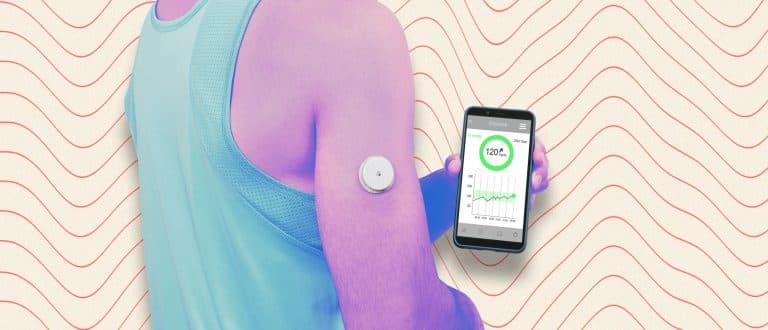This is The Best Time of Day to Exercise to Prevent Type 2 Diabetes
The most important factor of any fitness routine is that you get it done. But depending on your fitness goals, there might be an ideal time of day to exercise to max out results. For example, if you want to lose weight, research suggests working out before breakfast is better (1). And if you’re chasing significant strength gains, working out in the afternoon or evening may give you a slight edge (2). But if it’s improving metabolic health and warding off diabetes you’re after, things aren’t quite as clear, according to new research from the journal Diabetologia (3).
The research, from Chirag Patel, Ph.D., a professor of Biomedical Informatics at Harvard Medical School, suggests that getting your total activity (i.e. exercise plus daily activities like chores) early in the day is associated with a lower risk of type 2 diabetes. “But it gets a little more complicated, because when we examined vigorous activity (i.e. running) or moderate-to-vigorous activity (i.e. walking) alone time didn’t matter,” explains Patel. In other words, any time was a good time for a structured workout.
So, when and how should you workout to minimize your risk of type 2 diabetes? Here’s the scoop.
What the Study Found
Patel and fellow researchers examined 93,095 individuals (with an average age of 62 years) from the UK Biobank, a large long-term study in the United Kingdom investigating the impact of genetic predisposition and environmental exposure on the development of disease.
For one week, participants tracked their physical activity with a wrist-worn accelerometer—a fitness tracker that captures the intensity of exercise and everyday activities.
Researchers then broke the data down into morning, afternoon, and evening segments as well as moderate to vigorous and vigorous physical activity to see if there was any difference in the association of time of day or intensity of exercise with type 2 diabetes incidence.
“We found the total activity one does in the morning and afternoon is associated with less of a risk for diabetes,” says Patel. But structured exercise in the moderate to vigorous zone had benefit regardless of the time of day.
In other words, the time of day really only mattered when all daily activity was taken into account (i.e. daily chores and structured exercise). Any time of day was solid for a structured, high-intensity workout. So, while squeezing in some chores or moving your body early in the day isn’t a bad idea, when it comes to an actual workout—like zone 2 cardio or cycling—do it whenever you prefer.
How Effective is Exercise for Diabetes Prevention?
When it comes to type 2 diabetes prevention, Patel’s work is just the tip of the iceberg. Type 2 diabetes affects 1 in 10 of adults in the U.S., according to the Centers for Disease Control and Prevention (4). Researchers are racing for answers for how to squash diabetes risk, and fast.
While the traditional diabetes medication metformin can help keep diabetes at bay, it doesn’t hold a candle to lifestyle changes like exercise.
A randomized control trial of over 3,000 participants found 150 minutes of moderate exercise per week combined with modest weight loss was more effective than taking metformin for reducing diabetes risk (5). Metformin reduced the incidence of type 2 diabetes by 31 percent, exercise and modest weight loss resulted in a staggering 58 percent reduction.
How to Workout to Prevent Type 2 Diabetes
While both moderate to vigorous exercise and even general physical activity were associated with benefits in the Diabetologia study, high-intensity interval training (HIIT) might have unique benefits, according to muscle physiologist Martin Gibala, Ph.D.
“One of the reasons why exercise is therapeutic in the treatment of high blood sugar or diabetes—well, there’s a lot of reasons—but one of the reasons is you increase glucose transport capacity on the cell membrane,” Gibala told Rhonda Patrick, Ph.D. on FoundMyFitness. “What that means is it allows more glucose to be moved into the muscle, maybe then stored as muscle glycogen, and that helps to lower the blood sugar levels, especially if they’re chronically high.”
High-intensity exercise uniquely relies on a high volume of glucose (AKA blood sugar) for fuel during exercise. Which is why researchers suspect that HIIT may have a bigger impact on insulin sensitivity—thus, reducing the risk prevalence of type 2 diabetes (6).
References
1. Edinburgh, R. et al. (2020). Lipid Metabolism Links Nutrient-Exercise Timing to Insulin Sensitivity in Men Classified as Overweight or Obese.
2. Mirizio, G. et al. (2020). Time-of-Day on Short-Duration Maximal Exercise Performance.
3. Tian, C. et al. (2023). Association Between Timing and Consistency of Physical Activity and Type 2 Diabetes: A Cohort Study on Participants of the UK Biobank.
4. Centers for Disease Control and Prevention (2023). The Facts, Stats, and Impacts of Diabetes.
5. Knowler, W. et al. (2020). Reduction in the Incidence of Type 2 Diabetes with Lifestyle Intervention or Metformin.
6. Bird, S. et al. (2017). Update on the Effects of Physical Activity on Insulin Sensitivity in Humans.












